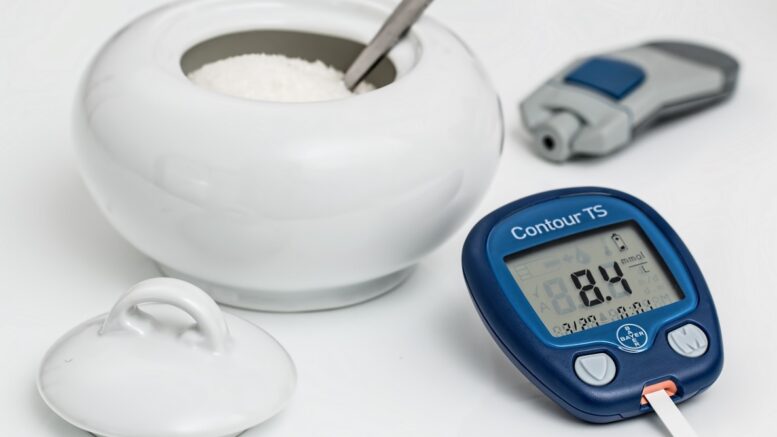If you are living with diabetes or prediabetes, you have likely heard the term “insulin resistance” thrown around. However, do you know what it means and how to effectively manage it? Insulin resistance is a risk factor for developing Type 2 diabetes, but its effects may go far beyond that. It can also lead to weight gain, fatigue, high blood pressure, and a higher heart disease and stroke risk. Being informed about insulin resistance is vital to better understand your health needs and actively manage underlying conditions such as diabetes or prediabetes.
In this article, we will discuss the causes of insulin resistance and various symptoms associated with the condition so you can be more aware of any changes in your body associated with your medical history. We’ll also explore possible treatments for managing insulin levels to help achieve better overall wellness – both medically and physically.
What is Insulin Resistance – Definition, Causes, Symptoms
Insulin resistance is a condition where the body’s cells become resistant to the effects of insulin hormone, resulting in high blood sugar levels. This phenomenon occurs due to several reasons, including genetics, a sedentary lifestyle, overweight or obesity, and unhealthy eating habits. As the disease progresses, it can lead to type 2 diabetes, cardiovascular diseases, and other complications.
Some common symptoms of insulin resistance include fatigue, sugar cravings, frequent urination, increased thirst, and blurred vision. However, early diagnosis and treatment can help manage the condition well, and adopting a healthy lifestyle with regular exercise and balanced food choices can also help prevent or control insulin resistance. Knowing where to buy Ozempic online, an injectable medication that can help improve blood sugar control is another option for managing the condition.
Diagnosing and Monitoring Insulin Resistance
Insulin resistance, a condition characterized by decreased sensitivity to insulin, is typically diagnosed through a series of blood tests. These tests, performed after an overnight fast, measure blood sugar levels to assess the body’s response to glucose. The two most commonly used tests to diagnose insulin resistance are fasting plasma glucose (FPG) and oral glucose tolerance tests (OGTT).
During the FPG test, blood samples are taken after an overnight fast to measure the fasting blood sugar level. A result of 100 milligrams per deciliter (mg/dL) or higher may indicate insulin resistance. The OGTT involves drinking a sugary solution, followed by blood samples taken regularly to track the body’s ability to clear glucose from the bloodstream. If the blood sugar levels remain elevated two hours after consuming the solution, it may suggest insulin resistance.

In addition to these tests, healthcare providers may consider other markers to assess insulin resistance risk. High levels of triglycerides, a type of fat in the blood, and low levels of high-density lipoprotein (HDL) cholesterol often accompany insulin resistance. High blood pressure is also commonly associated with this condition.
Dietary Strategies to Manage Insulin Resistance
Making healthy food choices is an essential aspect of managing insulin resistance. A well-balanced diet with plenty of fruits, vegetables, whole grains, and lean proteins can help improve blood sugar control and overall health. Foods high in refined carbohydrates, such as white bread, pasta, and sugary snacks, should be limited as they can cause spikes in blood sugar levels.
In addition to choosing nutrient-dense foods, portion control is vital in managing insulin resistance. Eating smaller, more frequent meals throughout the day can help stabilize blood sugar levels and prevent spikes. Including high-fiber foods such as beans, peas, and lentils in your diet may also be beneficial as they can slow down digestion and absorption of glucose. Consulting with a registered dietitian can help create a personalized meal plan that meets your needs and supports insulin resistance management.
Exercise Interventions for Enhancing Insulin Sensitivity
Regular physical activity is essential for managing insulin resistance. Exercise can help improve insulin sensitivity, which means the body’s cells become more responsive to the effects of insulin. It can lead to better blood sugar control and reduced risk of developing type 2 diabetes.
Aerobic exercises such as walking, running, cycling, and swimming are all great options for improving insulin sensitivity. Resistance training, which involves using weights or resistance bands, can also be beneficial in building muscle mass and improving insulin sensitivity. Aiming for at least 150 minutes of moderate-intensity aerobic exercise per week and two days of strength training is recommended.
Over the Counter Supplements that Can Help Lower Blood Sugar Levels
In addition to lifestyle changes, some over-the-counter supplements may also aid in managing insulin resistance and lowering blood sugar levels. These include chromium, magnesium, and vitamin D. Chromium is a mineral that regulates insulin sensitivity and glucose metabolism. Studies have shown that supplementation with chromium can improve insulin sensitivity and lower blood sugar levels in individuals with insulin resistance.
Magnesium is another mineral that may help improve insulin sensitivity. It plays a role in glucose metabolism and has been shown to decrease insulin resistance in obese individuals. Vitamin D deficiency has also been linked to insulin resistance; supplementation with this vitamin may help improve insulin sensitivity and blood sugar control. However, consulting with a healthcare provider before starting any supplements is essential to ensure they are safe and appropriate for you.
Medications Used to Treat Insulin Resistance and Diabetes
A healthcare provider may recommend medications if lifestyle changes and over-the-counter supplements are not enough to manage insulin resistance. Metformin is typically the first-line medication for insulin resistance and type 2 diabetes. It works by decreasing glucose production in the liver and improving insulin sensitivity in muscle cells.
In some cases, injectable medications such as Ozempic (semaglutide) may also be prescribed. Ozempic is a glucagon-like peptide 1 (GLP-1) receptor agonist that helps improve blood sugar control by increasing insulin secretion, decreasing glucagon production, and slowing gastric emptying. It is available as a once-weekly injection and can reduce the risk of developing heart disease or stroke in individuals with type 2 diabetes.
